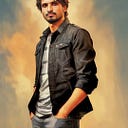WordPress Dashboard
The WordPress Dashboard is the first screen that will be seen when you log into the administration area of your blog which will display the overview of the website. It is a collection of gadgets that provide information and provide an overview of what’s happening with your blog. You can customize your needs by using some quick links such as writing a quick draft, replying to the latest comment, etc.
What is the WordPress Dashboard?
For handling all the different utilities of WordPress, you need a control panel from which you can control and manage your entire WordPress Website. The admin dashboard of WordPress is also called WP Admin Panel. It acts as a control unit, which consists of a collection of gadgets that can help build your website with a customized look and theme, and therefore, it is essential to understand what features it has and how you can use it as a user.
WordPress Dashboard Features
These are the features available on the WordPress Dashboard:
- Dashboard Menu
- Top Admin Bar
- Screen Options
- Welcome to WordPress
- At a Glance
- Activity
- Quick Draft
- WordPress News
- Admin Sidebar Menu
Dashboard Menu
The WordPress Dashboard provides a navigation menu that contains some menu options such as posts, media library, pages, comments, appearance options, plugins, users, tools, and settings on the left side.
Top Admin Bar
WordPress Top Admin Bar provides some shortcuts links, which include notifications about plugin updates, user comments, writing or editing the post, user options, etc. You can see that it will be available on all pages of WordPress after login, for your convenience.
Screen Options
The dashboard contains different types of widgets which can be shown or hidden on some screens. It contains checkboxes to show or hide screen options and also allows us to customize sections on the admin screen.
Welcome
It includes the Customize Your Site button which allows customizing your WordPress theme. The center column provides some useful links such as creating a blog post, creating a page, and viewing the front end of your website. The last column contains links to widgets, menus, settings related to comments, and also a link to the First Steps With WordPress page in the WordPress codex.
At a Glance
This section gives an overview of your blog’s posts, the number of published posts and pages, and the number of comments. When you click on these links, you will be taken to the respective screen. It displays the current version of running WordPress along with the currently running theme on the site.
Activity
The Activity widget includes the latest comments on your blog, recent posts, and recently published posts. It allows you to approve, disapprove, reply, edit, or delete a comment. It also allows you to move a comment to spam.
Quick Draft
The Quick Draft is a mini post editor which allows writing, saving, and publishing a post from the admin dashboard. It includes the title for the draft, some notes about the draft, and save it as a Draft.
WordPress News
The WordPress News Widget displays the latest news such as the latest software version, updates, alerts, news regarding the software, etc. from the official WordPress blog.
Admin Sidebar Menu
WordPress Admin Sidebar Menu provides main admin options, which include links such as Posts, Media, Pages, Comments, Appearance, Plugins, Users, Tools, Settings, etc., used to handle your entire website components.
Let us understand each of these menus one by one.
- Posts: talks about the entries as contents in reverse chronological order on the posts page. Also, posts get displayed in the RSS feed of your blog. You can control the number of posts you want to show at a time from the Reading Settings.
- Pages: this is a static website content element and is not listed according to date. Also, pages do not make use of tags. An About page is a typical example of a page.
- Media Library is an essential repository for media files (such as images, audio, videos, and other documents) that can be used on your site. It allows you to upload as well as manage media files in your posts and pages easily and quickly.
- Comments show your website’s visitors’ comments as they wanted to communicate with you, and you can see the list of all comments made by your readers.
- Appearances are used to customize your website’s look and appearance.
- Plugins are a section from which you can incorporate other additional programs for your website, which can extend the functionality and add new features to your site.
- User is that section helps in defining what actions the different users of your site are allowed to perform. These actions are called capabilities.
- Tools contain a collection of programs for performing some non-routine management tasks.
- Settings are used to set the basic configuration of your site.
___________________________________
Thanks for a read If you have any questions then send me a comment.☺️
💞And if you want to give me your feedback then you give me in the comment.💖
